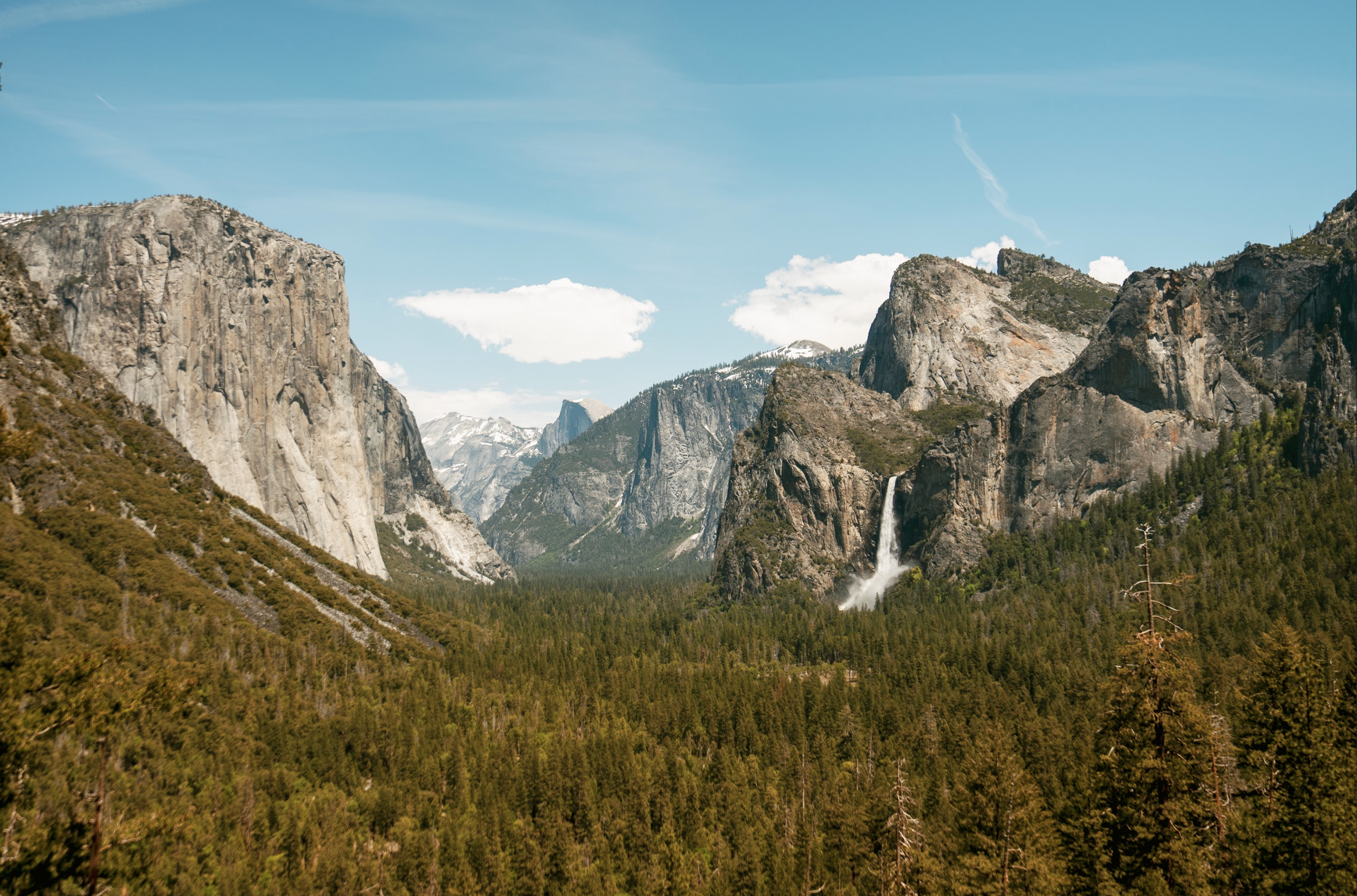Exploring the geological wonders of America
THE UNITED STATES SEEMS TO BE THE BEST DESTINATION FOR GEOLOGICAL TOURISM THANKS TO NATURAL ADVANTAGES. IT IS HOME TO DIVERSE ECOSYSTEMS, BREATHTAKING LANDSCAPES, MAJESTIC MOUNTAIN RANGES, EXPANSIVE VALLEYS, PRISTINE LAKES AND RIVERS, PICTURESQUE ISLANDS AND ARCHIPELAGOS, AND UNTOUCHED BEACHES. BESIDES, THE BLENDING OF SEVERAL CULTURES AND THE PRESERVATION OF PRICELESS ARTIFACTS HAS BECOME THIS COUNTRY’S UNIQUE FEATURE.
EXPLORING UTAH’S MIGHTY FIVE NATIONAL PARKS
During our five-week journey across America, we had the opportunity to visit some of the most awe-inspiring natural landscapes, of which the highlight is the Mighty Five, a group of five national parks in Utah, including Zion, Bryce, Capitol Reef, Arches, and Canyonlands. Each of them covers an area which is equivalent to the size of an entire city (between 300 and 500 km2). To maintain its distinctive features, each park uses a variety of conservation techniques.
Located at the crossroads of the Colorado Plateau, Great Basin, and Mojave Desert regions, Zion National Park boasts a unique geographical position and diverse ecosystems that foster an extraordinary variety of flora and fauna. The park operates a shuttle bus system to take visitors to hiking trails, so they may explore the natural beauties on foot while also reducing traffic congestion and safeguarding the fragile desert ecosystem. The Virgin River’s vivid green colors captured our attention. Seen from above, the river resembled a thin ribbon embracing the craggy rocks below.
Bryce Canyon National Park, a vast conservation area in southern Utah, is renowned for its towering red rocks known as hoodoos. Impacts from ice, rain, weathering, and erosion processes have sculpted these rocks into walls, windows, and eventually hoodoos. The park endeavors to educate visitors about the preservation of these hoodoos, which range from the height of an average person to a 10-story building. Bryce is also known for having a stunning dark night sky, which promotes attempts to reduce light pollution.
In the southern Utah desert, Capitol Reef National Park is acclaimed for its expansive area dominated by a nearly 100-mile-long uplifted rock formation called the Waterpocket Fold – a geological feature stretching from Thousand Lake Mountain to Lake Powell. The park gets its name from the white Navajo sandstone cliffs that form domes along the Waterpocket Fold, extending from the Fremont River to Pleasant Creek. This region is also well known for its many historic orchards that have been maintained as part of the agricultural legacy. Apples, cherries, apricots, pears, peaches, and plums are just a few types of fruits thriving in this environment.
Meanwhile, bordering the Colorado River to the southeast, Arches National Park boasts more than 2,000 natural sandstone arches forming grand archways. Driving through the park at dawn, we looked at the far-off outlines of arches lit by the morning sun, which looked like doors leading to a pristine and untouched world. After that, we took a trek around the trails to have a better look at the timeless yet delicate beauty. The changes that occur in nature are profound and erratic. Thus, in order to stop erosion surrounding the sandstone arches, a number of conservation measures are put in place.
At Arches, we also experienced waterless restrooms, making us understand how valuable water is, particularly in dry places like Utah. The park authorities have minimized water usage and reduced damage to the local ecosystem by building waterless bathrooms. Water conservation, ethical waste management, and the significance of sustainable practices are among the lessons taught to visitors.
When looking at photos of Canyonlands National Park, we thought we might go there, but a few intriguing pieces of information made us eager to experience it firsthand. Author Edward Abbey, a frequent visitor, described Canyonlands as “the strangest, most wonderful, magical place on Earth – there’s nothing like it anywhere”. The strange feeling suddenly invaded us as we climbed between Island In The Sky – a large, flat mountain in the northern part of the park, between the Colorado River and the Green River. I couldn’t help but wonder, if they were to build a cable car or an amusement park here, would there still be a place for us? Fortunately, the park has implemented policies to minimize negative human impacts, with educational campaigns promoting responsible camping and hiking activities.
BIG BEND NATIONAL PARK, TEXAS
With over 1,200 plant species, more than 450 bird species, 56 reptile species, and 75 mammal species protected, Big Bend National Park in West Texas, bordering Mexico, is the largest preserved area of Chihuahuan Desert landscape and ecosystem in the United States. We spent a day hiking the Chisos Mountains and another day kayaking along the Rio Grande River. While hiking, we received instruction on self- defense techniques in case of encountering bears. When riding in the tour guide’s pickup truck over large stretches of desert to the Santa Elena Canyon for kayaking, we learned about the names and uses of numerous plant species. While driving around, we encountered many speed limit signs warning of potential encounters with wildlife crossing the road.
One special aspect that made this place a “paradise” in our hearts is the darkest night sky in America. I still remember the feeling of fumbling for food under the dim light of a travel flashlight while sitting in the desert, beneath the starry sky. Houses are sparse there, contributing to the efforts made to preserve America’s darkest sky. Also, there were only a few houses from the park entrance inward. Besides, most people lived in tiny groups outside. Furthermore, it took us more than ten kilometers to see a house in the town of Terlingua, where we spent the night. Terlingua is around an hour’s drive from the park entrance. Here, the dwellings were built simply as though they were only bystanders quietly observing the movements of nature.
YOSEMITE NATIONAL PARK, CALIFORNIA
Yosemite National Park is situated in the Sierra Nevada mountains of California. Among the parks we visited, Yosemite seemed particularly exciting, as California’s nature is blessed with lush greenery from trees, flowers, grasses, waterfalls, and streams. Rewarded as a World Heritage Site in 1984, Yosemite is internationally recognized for its granite cliffs, waterfalls, pristine streams, giant sequoia forests, lakes, mountains, meadows, glaciers, and biological diversity. It stands as one of the largest and least fragmented habitats in the Sierra Nevada. Nearly 95% of the park’s area is wild. As the breeze rustled through the trees, we let our thoughts wander. We were mesmerized by the strong and elegant waterfalls that tumbled down sheer rock faces, resembling a delicate veil worn by a woman on her wedding day.
With the spirit of “keep it wild,” the park has implemented various projects such as conserving three giant sequoia groves and restoring natural balance by removing invasive plant species. To develop alongside tourism, Yosemite offers a full range of amenities including shops, restaurants, accommodations, the Yosemite Museum, and the Ansel Adams Gallery displaying prints of the region’s famous black and white landscapes captured by talented photographers.
While enjoying lunch under the tree canopy, I noticed a detail on a sign instructing the use of trash bins. In addition to guidance on waste sorting, there was a reminder for visitors to securely close the lids of trash bins to prevent bears and other wildlife from being allured by the scent of food. Inappropriate feeding can make them susceptible to diseases. With just those small characters, I found myself loving this place even more.
GEOTOURISM – RESPONSIBLE TRAVEL
Just a little observation led me to understand that conserving nature and promoting sustainable tourism do not preclude making infrastructure-related changes to the landscape. Instead, the key lies in how we make sustainable infrastructure investments, including developing energy-efficient structures, using renewable energy sources, and conserving water.
In order to prevent unsustainable development or exploitation from affecting these immaculate settings, the US government has declared national parks to be protected regions. The National Park Service (NPS) has put in place a number of policies, namely, working with private landowners to create
conservation easements around national parks, offering visitors educational programs, placing a strong emphasis on conservation, safeguarding wildlife, and encouraging appropriate outdoor activities. The NPS also collaborates with Native American tribes to integrate traditional ecological knowledge into park management practices.
Responsible tourism involves not just the government’s understanding of conservation but also the deliberate efforts of every individual— tiny components of nature that come together to form the natural world. National Geographic encourages travelers to learn about the places they visit (geological formations, history, culture, etc.). We will undoubtedly gain a greater appreciation as we gain comprehension! Additionally, let’s travel without leaving a footprint by minimizing our impact on the natural environment and wildlife habitats.
One interesting point I noticed when visiting the aforementioned places is the leisurely pace of the travelers. They seem to come here to rediscover their true selves, abandoning all identities, occupations, and social positions in favor of seeking direction from the natural world. Watching their relaxed faces admiring the natural landscapes – deserts, mountain peaks, towering cliffs, or gentle rivers meandering through valleys – reminded me of the lyrics by the late musician Trinh Cong Son: “I shrink back to being a child, becoming rain scattered in the sky”. Just like the lyrics, I feel empty like a raindrop. All sorrows, fears, anger, and even love seem insignificant in the vast world. Interestingly, that emptiness is very comforting in an unexplainable way!
ADDITIONAL INFORMATION:
You can use Enterprise to rent a car for your road trip throughout the US. To pick up the automobile, just make an appointment on their website and remember to bring your international driver’s license. Should you choose to fly into each state prior to renting a car, Enterprise has convenient pick-up and drop-off locations at several airports. Every state may have various rules in terms of using an international driver’s license, so be well- prepared in advance!
Some national parks in the US attract a large number of visitors and only sell a limited number of tickets per day to avoid overcrowding which can adversely affect the natural environment. It may take three to six months to get tickets for these parks. It is therefore advised to buy tickets upfront on the websites of each park.
Each park is equipped with numerous hiking trails. Some trails are long and challenging, spanning multiple days, suitable for experienced hikers. You can download the All Trails app to explore hiking trails and then choose the one that fits your itinerary and fitness level.
Some places require guided tours for access. In such cases, you can easily book tours through tour companies.
_Article on Travellive Magazine | Issue April /2024













